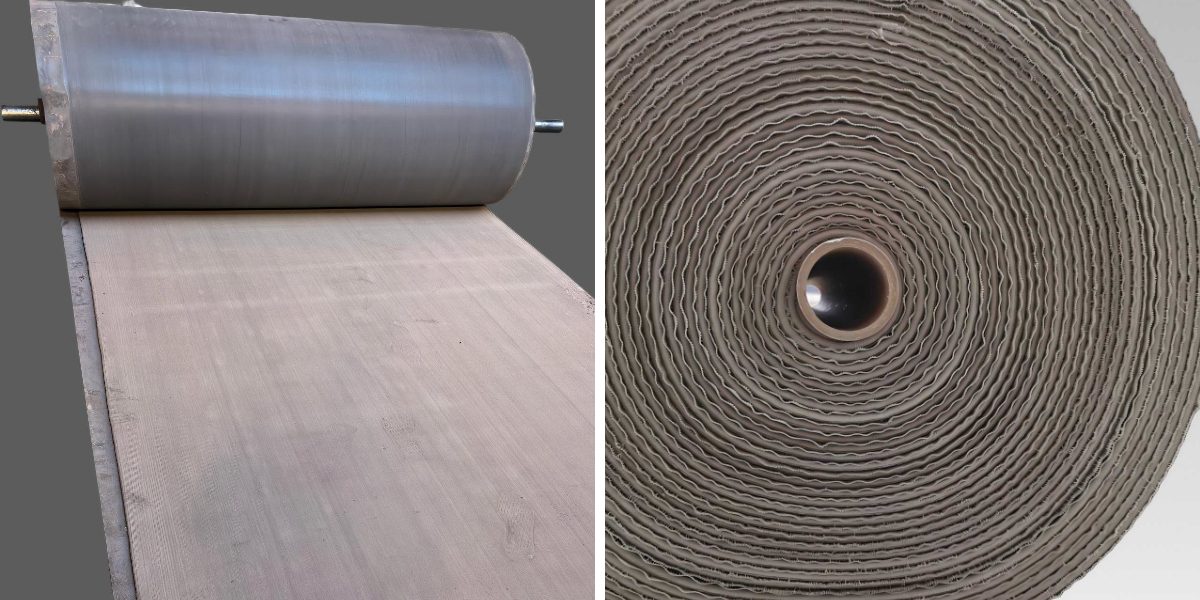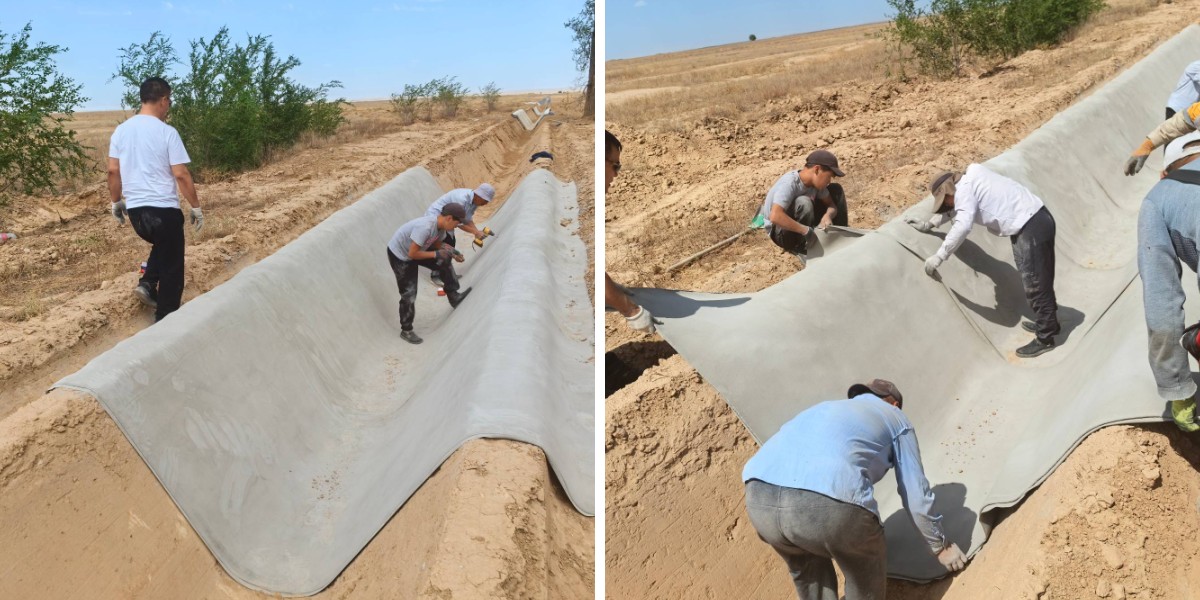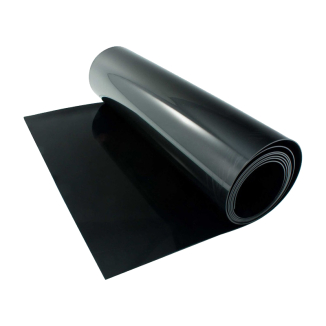What Is Concrete Cloth? A Complete Guide to the Innovative Building Material
In the world of construction, innovation frequently emerges from the want to simplify complicated processes. Enter flexible concrete blanket—a modern fabric that blends the electricity of concrete with the flexibility of fabric. Also acknowledged as cement blanket or concrete cloth, this product is remodeling how builders method the entirety from brief constructions to everlasting infrastructure. But what precisely is it, and why is it gaining popularity? Let’s dive into a whole guide.
What Is Concrete Cloth? Defining the Innovation
At its core, flexible concrete blanket—also referred to as concrete cloth—is a prefabricated, ready-to-use fabric designed to harden into a long lasting concrete layer when activated by means of water. Unlike regular concrete, which requires mixing aggregates, cement, and water on-site, this fabric arrives as a bendy sheet—making it light-weight and handy to transport.
The time period “concrete cloth” flawlessly describes its structure: a strong cloth matrix infused with a specifically formulated cement mixture. This cloth acts as each a reinforcement and a mold, making sure the cement units evenly and adheres strongly. Once hydrated, the fabric treatment options into a rigid, weather-resistant floor that competitors the energy of traditional concrete however with a fraction of the labor.
Think of it as a “concrete-in-a-roll” solution. Whether you’re repairing a drainage ditch, constructing a protecting wall, or growing an emergency shelter, flexible concrete blanket—or cement blanket—eliminates the want for heavy machinery, messy mixing, and prolonged setup times.
How Does Concrete Cloth Work? The Science Behind It
The magic of flexible concrete blanket lies in its simplicity. Here’s a breakdown of its functionality:
Structure: Each sheet of concrete cloth consists of three layers: a pinnacle protecting fabric, a center layer of dry cement powder combined with components for energy and flexibility, and a backside layer of reinforcing mesh. This graph ensures uniformity and prevents cracking at some point of curing.
Activation: To use it, you unroll the cement blanket over the preferred floor and practice water—either with the aid of spraying, pouring, or immersion. The water prompts the cement, triggering a chemical response that hardens the material.
Curing: After hydration, the concrete cloth therapies in 24–48 hours, relying on temperature and humidity. During this time, it retains its form whilst creating compressive electricity (typically 20–30 MPa, similar to wellknown concrete).
What makes this method game-changing? It eliminates the want for on-site mixing, formwork, or heavy equipment. A single employee can unroll and hydrate a sheet of concrete cloth, lowering labor prices and challenge timelines significantly.
Concrete Cloth vs. Traditional Concrete: Key Differences
To recognize flexible concrete blanket, it’s useful to evaluate it to ordinary concrete in quite a few key areas.
When it comes to transport and handling, flexible concrete blanket—or concrete cloth—has a clear advantage. It comes in lightweight, bendy sheets that are effortless to raise and maneuver, even in tight spaces. Traditional concrete, on the other hand, is heavy and cumbersome, requiring on-site mixing of aggregates, cement, and water, which provides to its bulk and complexity.
In phrases of installation, the simplicity of concrete cloth shines through. The technique entails unrolling the material, hydrating it, and letting it cure—no formwork is wished to structure it. Traditional concrete, however, needs cautious mixing, pouring into pre-built formwork, and a prolonged ready duration for curing, which provides steps and time to the project.
Labor necessities additionally vary drastically. Most flexible concrete blanket initiatives can be treated with the aid of simply 1–2 workers, thanks to its easy-to-use design. Traditional concrete, by way of contrast, requires groups of employees to control mixing, pouring, and ending tasks, growing labor prices and coordination efforts.
Setting time is some other imperative distinction. Cement blanket healing procedures totally in 24–48 hours, permitting for speedy assignment completion. Traditional concrete, however, can take seven or greater days to attain its full strength, delaying subsequent work and extending mission timelines.
Finally, flexibility units them apart. Before hydration, concrete cloth bends effortlessly to match contours and irregular surfaces, making it versatile for a range of applications. Traditional concrete is inflexible from the start, requiring specific formwork to obtain particular shapes, which limits its adaptability to uneven terrain.
For initiatives the place speed, portability, and decreased labor are priorities, flexible concrete blanket outperforms standard methods. However, it’s essential to be aware that for large-scale tasks requiring excessive thickness, regular concrete may nevertheless be preferable.
Applications: Where Concrete Cloth Shines
The versatility of flexible concrete blanket makes it appropriate for a vast vary of uses. Here are some of its most frequent applications:
1. Infrastructure Repairs
Road crews and civil engineers depend on cement blanket to rapidly restore potholes, culverts, and drainage channels. Its speedy curing time minimizes visitors disruptions, whilst its sturdiness prevents future erosion.
2. Retaining Walls & Slope Stabilization
When constructing preserving partitions or stabilizing slopes, concrete cloth conforms to uneven terrain, growing a seamless barrier in opposition to soil erosion. Its flexibility lets in it to adapt to floor motion barring cracking.
3. Emergency Shelters & Temporary Structures
In catastrophe zones, concrete cloth is a lifesaver. It can be deployed in hours to create weatherproof shelters, bunkers, or brief storage units. Its resistance to fire, water, and pests ensures protection in harsh conditions.
4. Agricultural & Environmental Projects
Farmers use flexible concrete blanket to line irrigation ditches, forestall water seepage, and guard farm animals enclosures. Environmental groups additionally make use of cement blanket for riverbank restoration, as it promotes vegetation increase whilst stopping erosion.
5. DIY & Small-Scale Projects
Homeowners and DIY fans love concrete cloth for paths, backyard edging, or even outdoor furnace pits. Its ease of use makes it accessible to these besides expert development experience.
Benefits of Using Concrete Cloth
Why pick out flexible concrete blanket over different constructing materials? Here are its standout advantages:
Speed: Cuts task timelines by way of 50% or greater in contrast to typical concrete.
Cost-Effective: Reduces labor, equipment, and fabric waste costs.
Durability: Resists UV rays, water, mold, and chemical damage—key for long-lasting concrete cloth structures.
Eco-Friendly: Low carbon footprint due to minimal transportation and mixing, making cement blanket a sustainable choice.
Versatility: Adapts to curved or irregular surfaces with ease, a hallmark of concrete cloth.
How to Choose the Right Concrete Cloth Product
Not all flexible concrete blanket products are created equal. When shopping, consider:
Thickness: Options vary from 5mm to 50mm, relying on the project’s load requirements—critical for both concrete cloth and cement blanket applications.
Reinforcement: Some merchandise encompass more mesh for high-stress functions like protecting walls, enhancing the strength of concrete cloth.
Brand Reputation: Look for relied on producers with certifications for energy and safety, ensuring quality in any flexible concrete blanket purchase.
Size: Rolls usually come in 5m–20m lengths; calculate your wants to keep away from waste, whether using cement blanket or concrete cloth.
For most DIY projects, a 10mm–20mm cement blanket will suffice. For industrial use, seek advice from a dealer to suit the flexible concrete blanket product to your unique needs.
Final Thoughts: Why Concrete Cloth Is Here to Stay
Flexible concrete blanket—whether called cement blanket, concrete cloth, or concrete cloth—is extra than a trend; it’s a building revolution. By combining the power of concrete with the comfort of fabric, it solves long-standing challenges in speed, labor, and adaptability. Whether you’re a expert builder or a homeowner, this modern fabric gives a smarter way to build, repair, and create.
As sustainability and effectivity end up increasingly more necessary in construction, flexible concrete blanket is poised to play a central role. Its capability to limit waste, reduce costs, and supply long lasting consequences makes it a must-consider for any project. So, the subsequent time you handle a building task, ask yourself: Could a cement blanket or concrete cloth make the job easier? Chances are, the reply is yes.
Contact Us
Company Name: Shandong Chuangwei New Materials Co., LTD
Contact Person :Jaden Sylvan
Contact Number :+86 19305485668
WhatsApp:+86 19305485668
Enterprise Email: cggeosynthetics@gmail.com
Enterprise Address: Entrepreneurship Park, Dayue District, Tai 'an City,
Shandong Province









